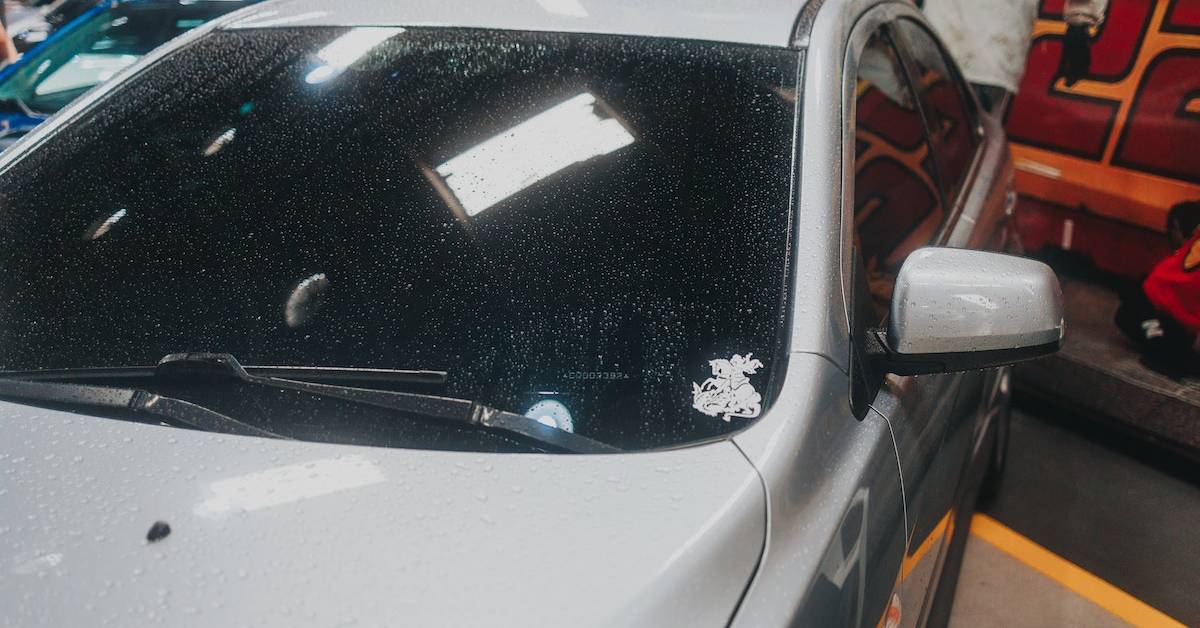Heads-Up Display windscreens, colloquially known as HUDs, have been evolving rapidly in the automotive industry.
Initially conceptualized for military applications, these displays are now transforming everyday driving, especially in countries like Australia.
This article delves deep into the advancements, challenges, and future of HUD windscreens with a specific focus on the Australian market.
An Overview of Heads-Up Display (HUD) Technology
The world of automobile technology is vast and rapidly evolving. Among its most innovative features is the HUD technology, which is redefining the driving experience for Australians.
What is Heads-Up Display?
Heads-Up Display, or HUD, refers to a transparent display that presents data without requiring the user, in this case, the driver, to look away from their usual viewpoints.
This technology projects essential driving information onto the windscreen, allowing the driver to access critical data without taking their eyes off the road.
The Evolution of HUD Technology Over the Years
HUD technology has its roots in military aviation, where pilots required instant data without diverting their gaze.
Over the decades, this technology has been adapted for commercial aircraft and, more recently, for personal vehicles.
The transition from basic monochromatic displays to colourful, high-definition, interactive screens has been remarkable, all aimed at enhancing safety and user experience.
Importance of HUDs in Modern-Day Vehicles
In an era where information is paramount, HUDs serve as a bridge between tech and safety.
By minimizing distractions and reducing the need to glance at traditional instruments, HUDs are now a cornerstone of modern vehicular design, offering a blend of aesthetics, function, and safety.
The Benefits of HUD Windscreens for Drivers
The incorporation of HUD windscreens in vehicles is not just a technological showpiece but brings a myriad of advantages to drivers.
Enhancing Driver Focus and Safety
One of the paramount benefits is the enhancement of driver focus. By projecting vital information onto the windscreen, drivers no longer need to shift their gaze, reducing distraction.
This direct line of sight to both the road and information significantly bolsters safety, especially in high-speed situations or congested urban environments.
Providing Real-time Data without Distraction
From navigation prompts to speed and fuel indicators, HUDs deliver real-time data right in the driver’s field of vision.
This seamless integration ensures that the driver remains informed without the need to sift through multiple interfaces or screens, leading to a more focused and aware driving experience.
Customisability and User Experience
Modern HUDs are not rigid in their display. Many offer customizable interfaces where drivers can choose which data points are crucial for them.
This personalization ensures that the driving experience is tailored to individual preferences, further enhancing user satisfaction.
Environmental Benefits: Reducing the Need for Physical Instruments
As we progress towards more sustainable solutions, HUDs also offer an environmental edge.
By reducing the need for physical instrument clusters and harnessing digital displays, there’s a decrease in material use, playing a small yet significant role in sustainable vehicle manufacturing.
Challenges and Concerns with HUD Windscreens
While HUD windscreens bring numerous advantages, they also come with their set of challenges and concerns that manufacturers and drivers should be aware of.
Potential for Overloading Information
One of the significant challenges of HUD technology is the potential risk of information overload.
With an array of data points available for display, there’s a possibility that drivers could be overwhelmed with too much information.
Striking a balance between providing necessary information and avoiding clutter is crucial for optimal user experience and safety.
Visibility Issues Under Certain Conditions
While HUDs are designed to be clear and visible, certain environmental conditions, such as bright sunlight or heavy rain, might impact the clarity of the display.
Manufacturers are continually working on improving visibility under these challenging conditions, but it remains a point of concern for some users.
Integration with Other Car Systems
As vehicles become more technologically advanced, integrating HUDs seamlessly with other car systems becomes essential.
Whether it’s compatibility with infotainment systems or ensuring real-time updates from vehicle sensors, the integration process can be complex and requires meticulous engineering.
Concerns About Driver Dependence
With the convenience of HUDs, there’s an underlying worry about drivers becoming overly reliant on them, potentially leading to decreased situational awareness.
It’s essential for drivers to use HUDs as an assistive tool rather than a primary source of information.
Understanding the Australian Market and Its Needs
Australia’s vast landscapes and unique driving conditions necessitate a tailored approach when introducing and perfecting HUD technology.
Australia’s Unique Driving Conditions and Challenges
From urban congestion in cities like Sydney and Melbourne to vast stretches of Outback roads, Australian drivers face a diverse set of challenges.
HUDs in the Australian market need to be adaptive, catering to both city driving and long-haul trips across varied terrains and climates.
Regulatory Considerations for HUDs in Australia
The Australian government has specific regulations concerning vehicular safety and technology.
Introducing and standardizing HUDs in the Australian market requires adherence to these regulations, ensuring that they enhance, not compromise, driver safety.
Key Players and Brands Offering HUD Windscreens in Australia
The Australian automotive market has seen the introduction of various HUD technologies, with both international and local players vying for attention.
Leading International Brands in the Australian Market
Brands like BMW, Mercedes-Benz, and Audi have introduced their sophisticated HUD systems in their premium vehicle lines.
These systems boast high-resolution displays, customizability, and integration with other onboard technologies, setting high standards in the market.
Local Australian Innovators in HUD Technology
While international brands have made their mark, local Australian companies are not far behind.
Innovators are working on affordable, efficient, and tailored HUD solutions that cater explicitly to the unique needs and preferences of Australian drivers.
Comparing Features and Price Points
With a diverse range of options available, consumers often look for comparisons in features and price points.
Whether it’s the display quality, integration capabilities, or price tags, understanding the market dynamics helps potential buyers make informed decisions.
Installation and Maintenance of HUD Windscreens
Once a consumer decides to adopt HUD technology, understanding its installation and upkeep becomes paramount.
Upgrading Traditional Cars with HUD Windscreens
For those not buying a new car but wishing to experience HUD technology, there are aftermarket solutions available.
These systems can be installed in existing vehicles, offering a taste of the HUD experience without the need for a new vehicle purchase.
Maintenance Tips and Best Practices
Like all tech, HUDs require maintenance to ensure longevity and optimal performance.
Regular cleaning of the windscreen, software updates, and periodic checks are vital to ensure the system functions flawlessly.
Addressing Common Technical Issues
Users might occasionally face technical glitches or challenges. Being aware of common issues and their solutions can enhance the user experience and reduce potential downtime.
Looking to the Future: Next-Generation HUD Technologies
As we gaze into the horizon, the future of HUD windscreens seems brighter than ever, with innovative technologies on the anvil.
The Role of Artificial Intelligence and Machine Learning
AI and ML are set to revolutionize HUDs by predicting driver needs, customizing displays in real-time, and integrating with other AI-powered vehicle systems for a seamless driving experience.
Integration with Augmented Reality (AR) and Virtual Reality (VR)
Augmented reality promises to take HUDs to the next level by overlaying digital information in the real world, providing contextual data like navigation paths directly on the road.
This integration will redefine how we perceive and interact with our driving environment.
Potential for Self-Driving Cars and HUD Systems
As autonomous vehicles become a reality, the role of HUDs will evolve.
They might serve as an interface between the vehicle and the passenger, providing updates, entertainment options, or even productivity tools.
Feedback Systems and Driver-Interactive Features
Future HUDs might be more interactive, allowing drivers to input commands, access detailed information, or even provide feedback, creating a two-way communication channel between the vehicle and its occupant.
Summary
From their military origins to becoming a staple in modern vehicles, HUD windscreens have come a long way.
For the Australian market, these systems promise enhanced safety, convenience, and an elevated driving experience.
As technology advances and the needs of Aussie drivers evolve, the HUD windscreens will undoubtedly play a pivotal role in shaping the future of driving down under.





